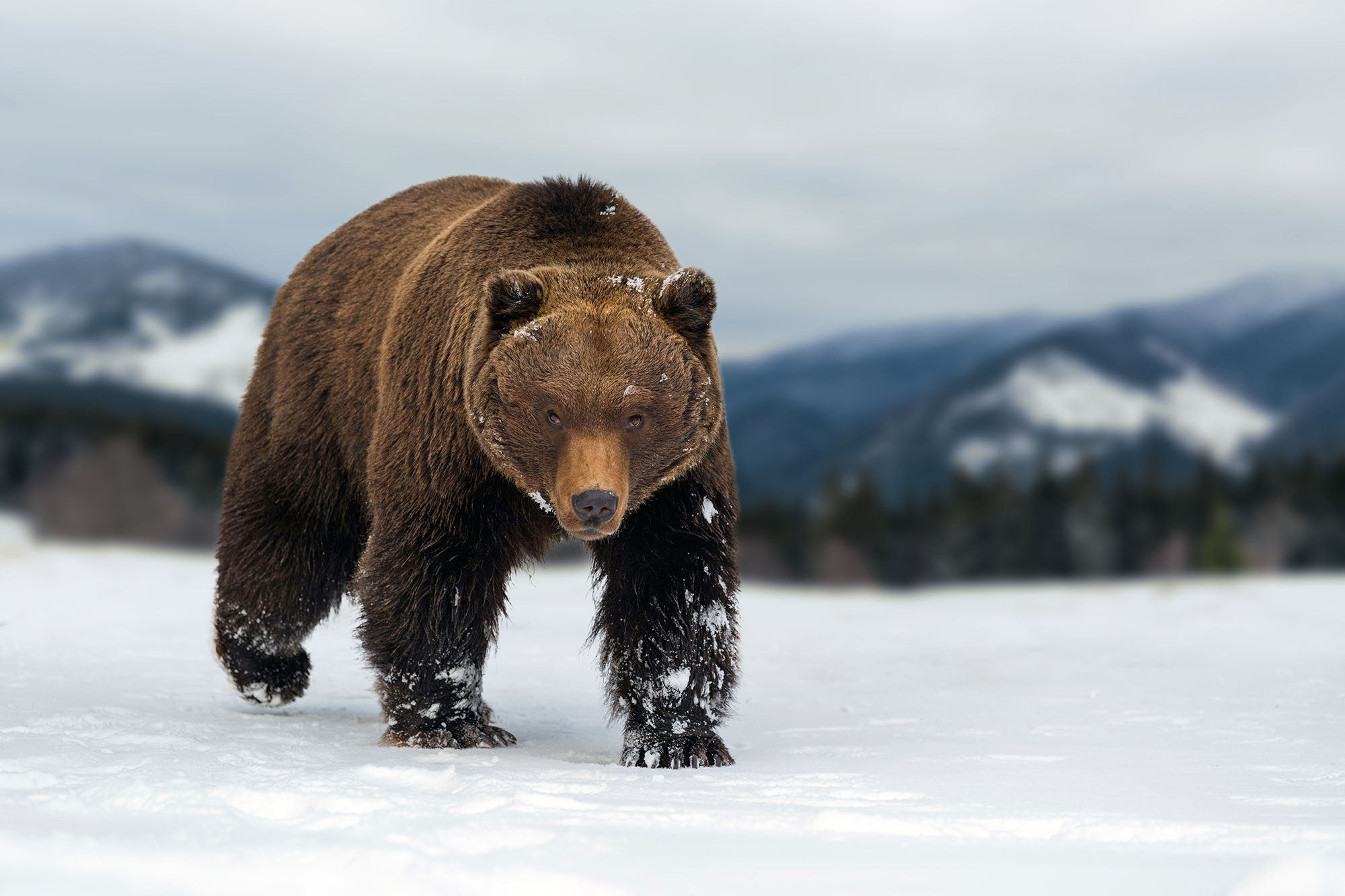Bear encounters are not uncommon in the backcountry. Attacks, fortunately, are somewhat rare but can happen when humans encroach into habitats where bears roam. Make yourself big, yell, curl into a ball … most of the suggestions for handling a bear encounter are Hail Mary tips meant for the last resort. Your best option is to avoid Smokey altogether.
Here are a few measures to help reduce the chance of ever needing those last-resort tactics.
Editor’s note: Updated in 2025 with current agency guidance, expanded food-storage recommendations, and modern bear-spray best practices.
Be Alert for Bear Signs
Notice signs of bear activity and stay on high alert when traveling through the area. Look for scat, digging or claw marks, fresh tracks, and disturbed ground.
During spring calving season, be aware that bears may cache kills and spend time near them. Cached carcasses may be partially buried or covered with vegetation, so move carefully through dense brush and low-visibility terrain.
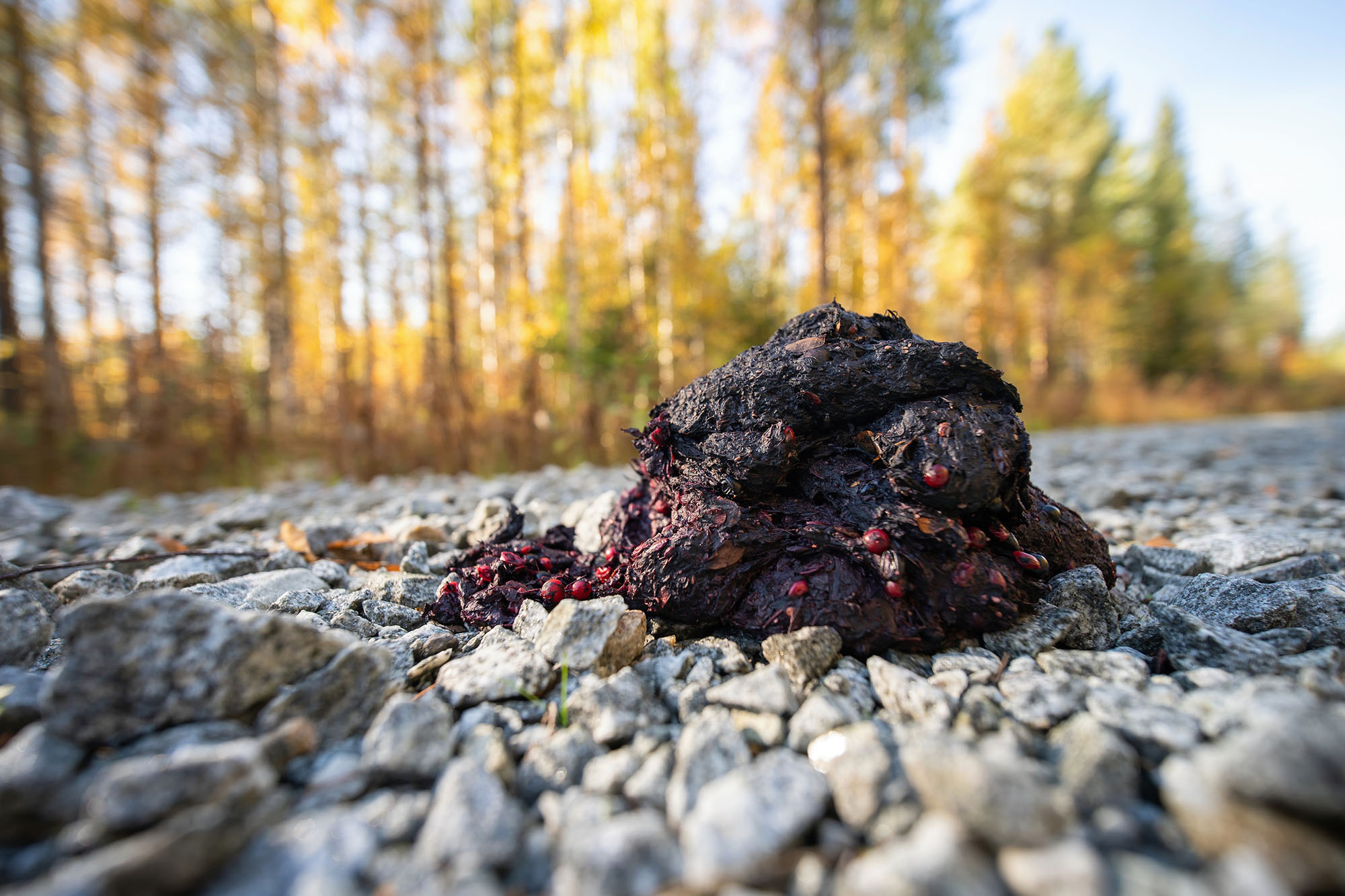

Bear scat is one of the most apparent ways to know bears are in the area. Black bear scat often appears loose or tubular with visible berries, grasses, or seed clusters. Grizzly scat tends to be larger with a wider diameter and may include hair, bone fragments, or heavy vegetation.
Fresh scat often holds moisture or shine.
Older scat dries, breaks apart easily, and loses color. Scat volume, moisture, and content can help you gauge how recently a bear passed through, which should influence your level of caution.
Don’t Attract Bears
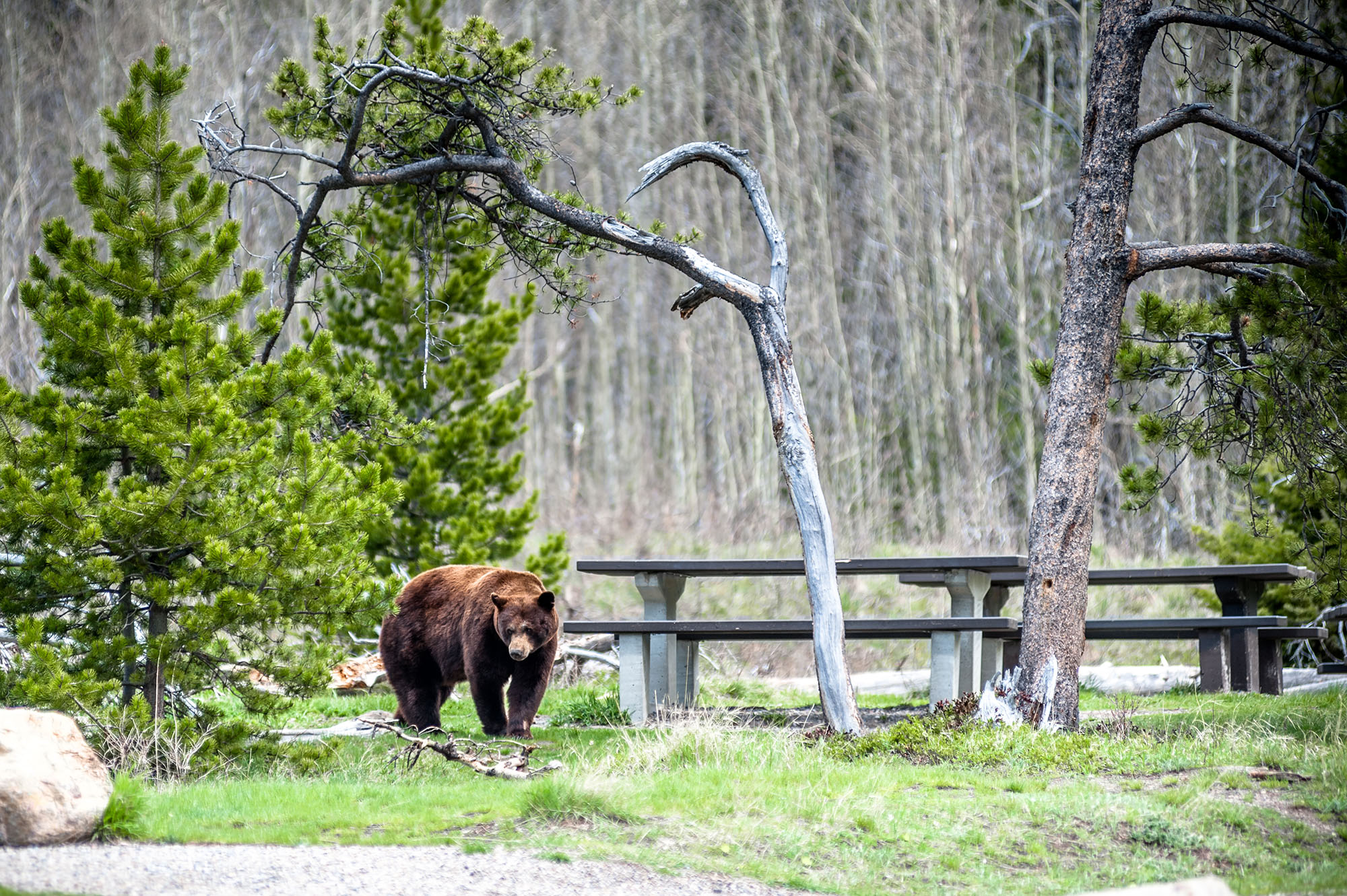

Bears rarely seek people out. They seek food. Anything with a scent qualifies, including toothpaste, deodorant, lotions, snacks, wrappers, and every other fragrant item you forgot you packed. Food security does more than safeguard your snacks — it also prevents bears from becoming habituated to human food. Habituation often results in relocation or euthanasia. A fed bear is a dead bear.
Keep Food Away From Your Tent: Cook, eat, and clean at least 100 yards from where you sleep. Distance reduces the chance that a bear wanders through your camp at night looking for leftovers.
Use Provided Storage When Available: Many high-use campsites offer food poles or storage lockers. Use them. Seal scraps, clean utensils, and secure anything with a scent as soon as you finish cooking.
Pack a Bear-Resistant Canister: Hard-sided bear-resistant canisters are recommended in most regions. Bears have learned to defeat poorly hung food bags, so canisters remain the most reliable option. When a hang is your only choice, suspend it at least 10 feet above the ground and 4 feet out from the trunk or post.
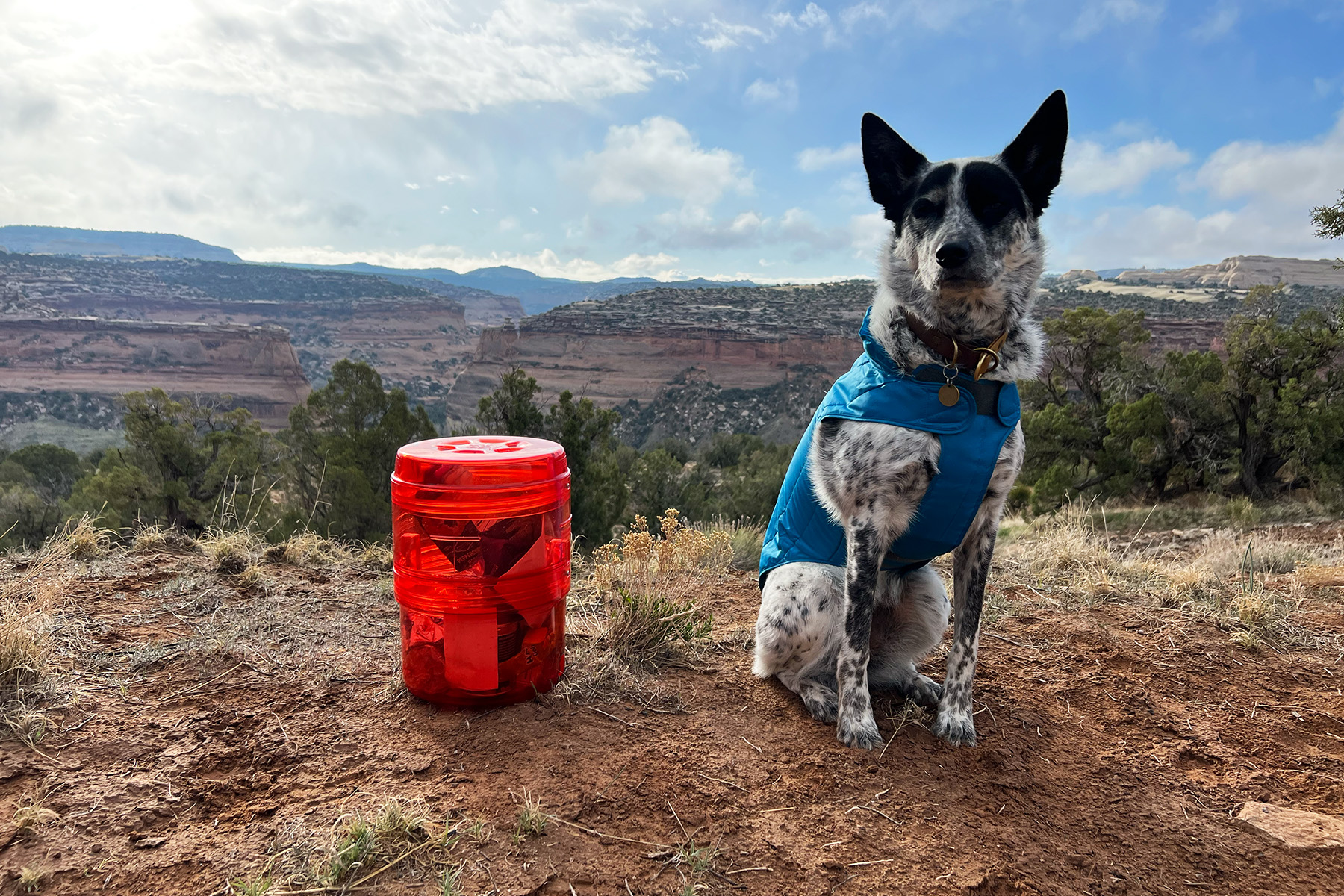

Hard-sided bear-resistant canisters are recommended in most regions. Bears have learned to defeat poorly hung food bags, so canisters remain the most reliable option. When a hang is your only choice, suspend it at least 10 feet above the ground and 4 feet out from the trunk or post.
Store Canisters Away From Camp: Place canisters at least 100 feet from your tent on flat ground. This prevents a curious bear from rolling your food into water, down a hill, or straight back into camp.
Protecting Your Food Protects Bears: Food security does more than safeguard your snacks. It prevents bears from becoming habituated to human food. Habituation often results in relocation or euthanasia. A fed bear is a dead bear.
Manage Toiletries and Micro-Trash: Brush your teeth away from camp and store hygiene items with your food. Before bed, check for micro-trash. Small scraps, wrappers, and food residue can attract wildlife just as easily as a full meal.
Know the Bears in Your Area


Understanding which bears live in the region helps you prepare for the right type of encounter. Black bears and grizzly bears share many behaviors, yet they differ in size, temperament, and how they respond to threats.
Knowing the basic and the differences improves your chances of avoiding a dangerous situation.
Learn Which Species Are Present
Check local land agency information before your trip. Many forests and parks provide maps that show where black bears, grizzly bears, or both species are commonly seen.
Wildlife updates, trailhead notices, and ranger stations offer additional insight into recent activity.
Key Physical Differences


Black bears vary widely in color and are smaller and leaner with a straighter facial profile and taller ears. Grizzly bears are bulkier with a visible shoulder hump, shorter, rounded ears, and a concave facial profile. Tracks also differ. Grizzly tracks show longer claw marks, a straighter toe pattern, and a distinct gap between the toes and claws.
Understand Behavior and Avoidance
Black bears often retreat when they sense people. They usually prefer to escape rather than confront.
Grizzly bears are more inclined to stand their ground and may react defensively when startled, especially near cubs or carcasses. Close-range surprises with either species create risk, yet grizzlies tend to escalate more quickly when they feel cornered.
Adjust Your Approach
If your region includes both species, stay extra alert in dense cover, near creeks, and around blind corners.
Make noise at regular intervals and keep bear spray ready. Increased awareness helps reduce surprise encounters, which remain the primary cause of defensive charges from both black bears and grizzlies.
Travel in a Group


Strength in numbers applies to bear safety. Hike with three or more people whenever possible. Bears are less inclined to approach a group than an individual. Long-term National Park Service data shows that most bear-related injuries in Yellowstone involved people hiking alone or in pairs.
Stay in Daylight
Broad daylight increases your visibility and reduces the likelihood of surprising a bear. Dawn, dusk, and nighttime are higher-risk periods because bears are more active. If you must travel early or late, move slowly through thick vegetation and stay vocal.
Make Noise


It might feel silly, but sound helps. Talk loudly with your group. When traveling through dense brush, near running water, or into areas with limited visibility, call out periodically. Your voice alerts bears to your presence.
Bear bells are popular with solo travelers and cyclists, but they’re not as effective and should not replace the occasional holler.
Current guidance leans toward making noise strategically rather than constantly, so you stay aware of your surroundings.
Important: Bring Bear Spray
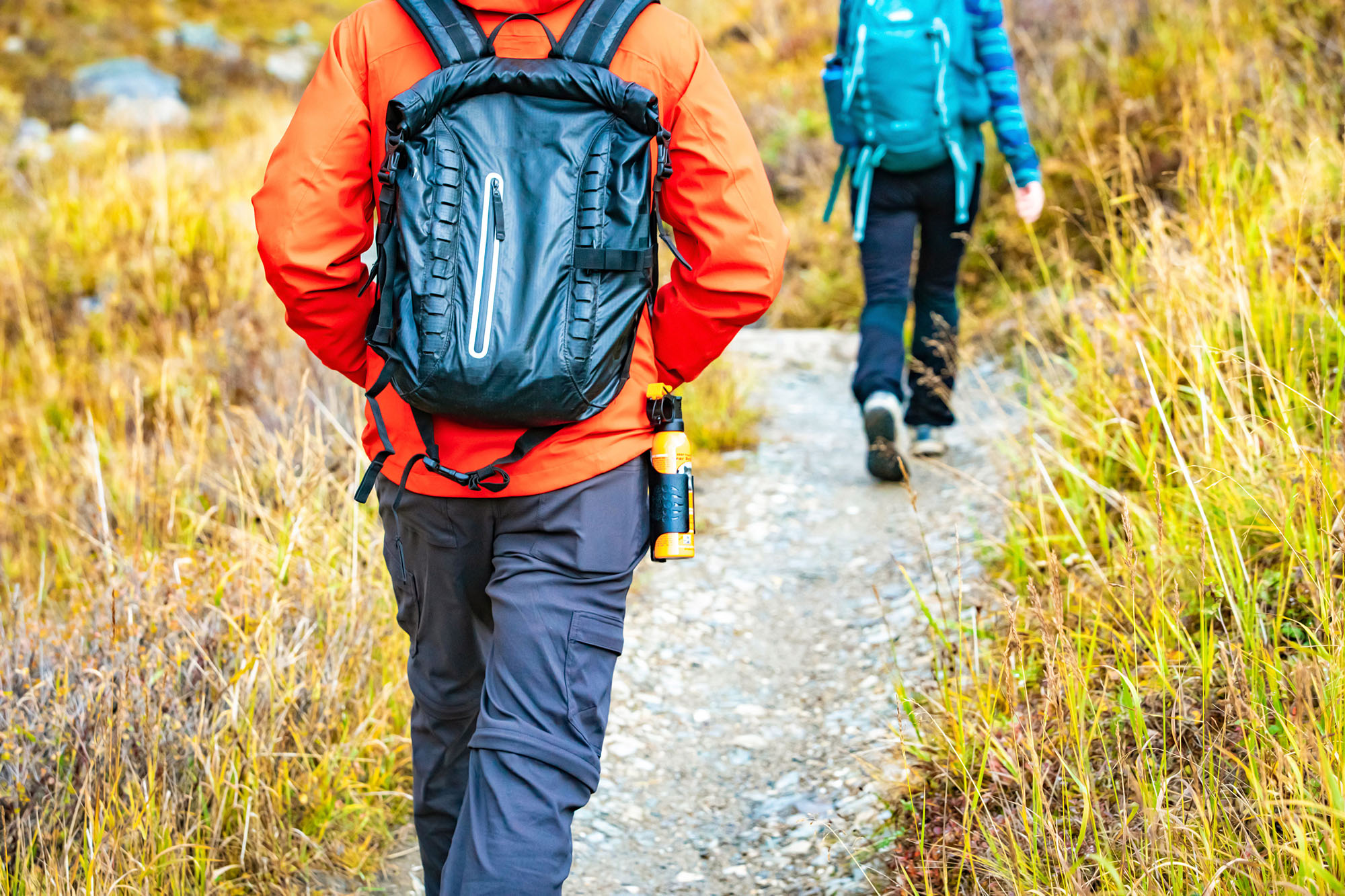

Bear spray is one of the most effective tools for stopping a charging bear. Do not use it on bears that have not approached you. If you see a bear at a distance, make noise, change direction, and avoid getting close.
Carry bear spray on a chest strap or hip holster where you can access it instantly. Check the expiration date regularly and replace older canisters before ingredients degrade. Never store bear spray in a hot vehicle or direct sun where temperatures can cause pressure buildup.
If you need to deploy it, follow the techniques in our Bear Spray 101 guide and leave the area immediately after the bear retreats.
In Summary
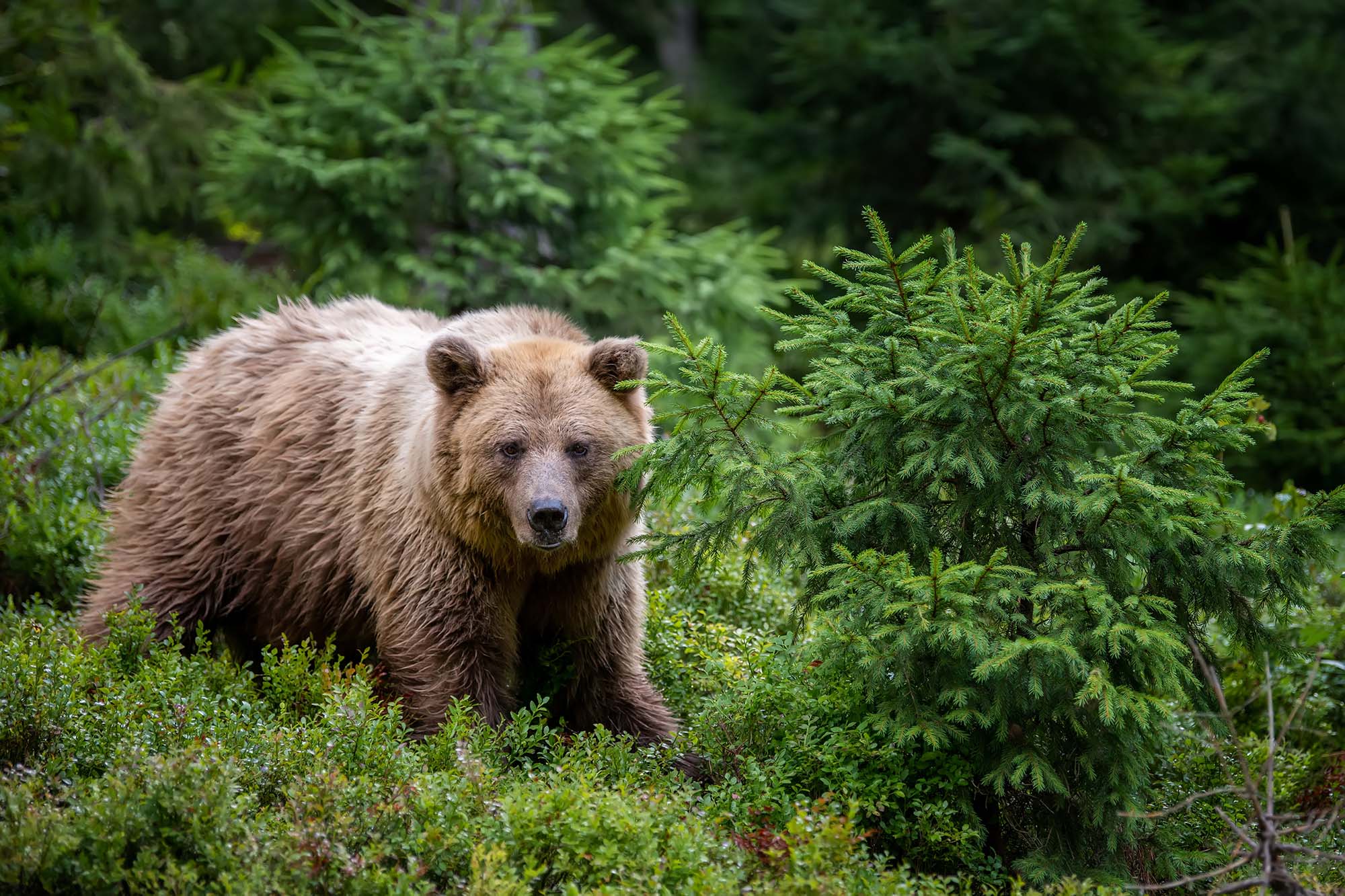

Bear spray belongs on your chest, your food belongs far from your tent, and your awareness belongs on the trail instead of on whatever snack you packed.
Most encounters end quietly. Most bears want nothing to do with you. Do your part to keep it that way, and you will give both sides a better night’s sleep.
Now get out there, stay smart, and remember that the only thing you want dragging your cooler across camp is you.
Read the full article here




